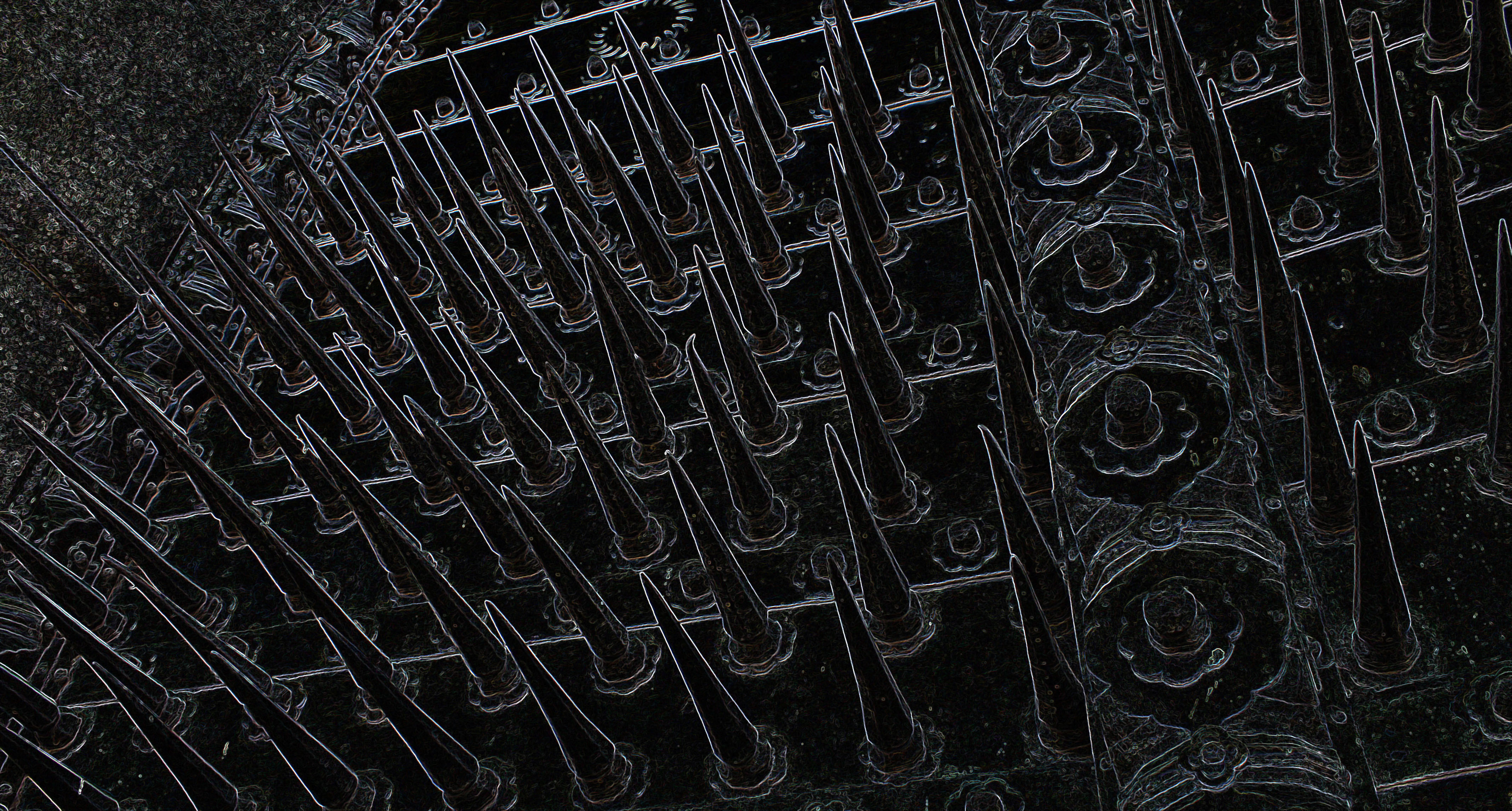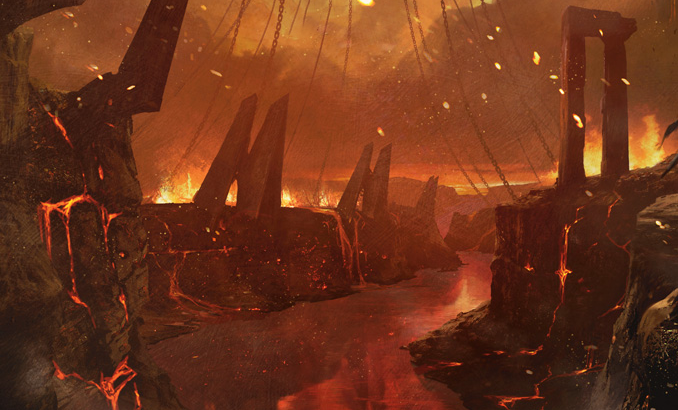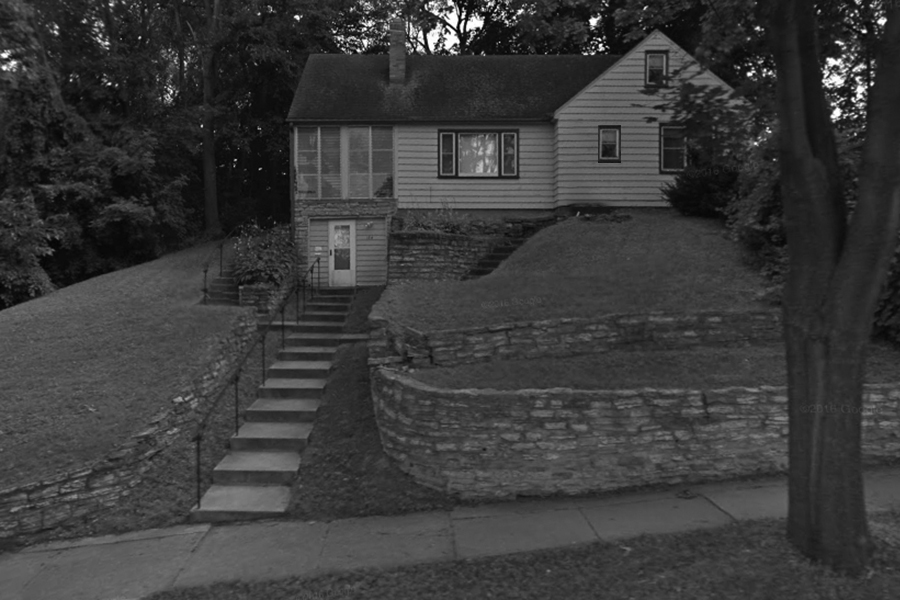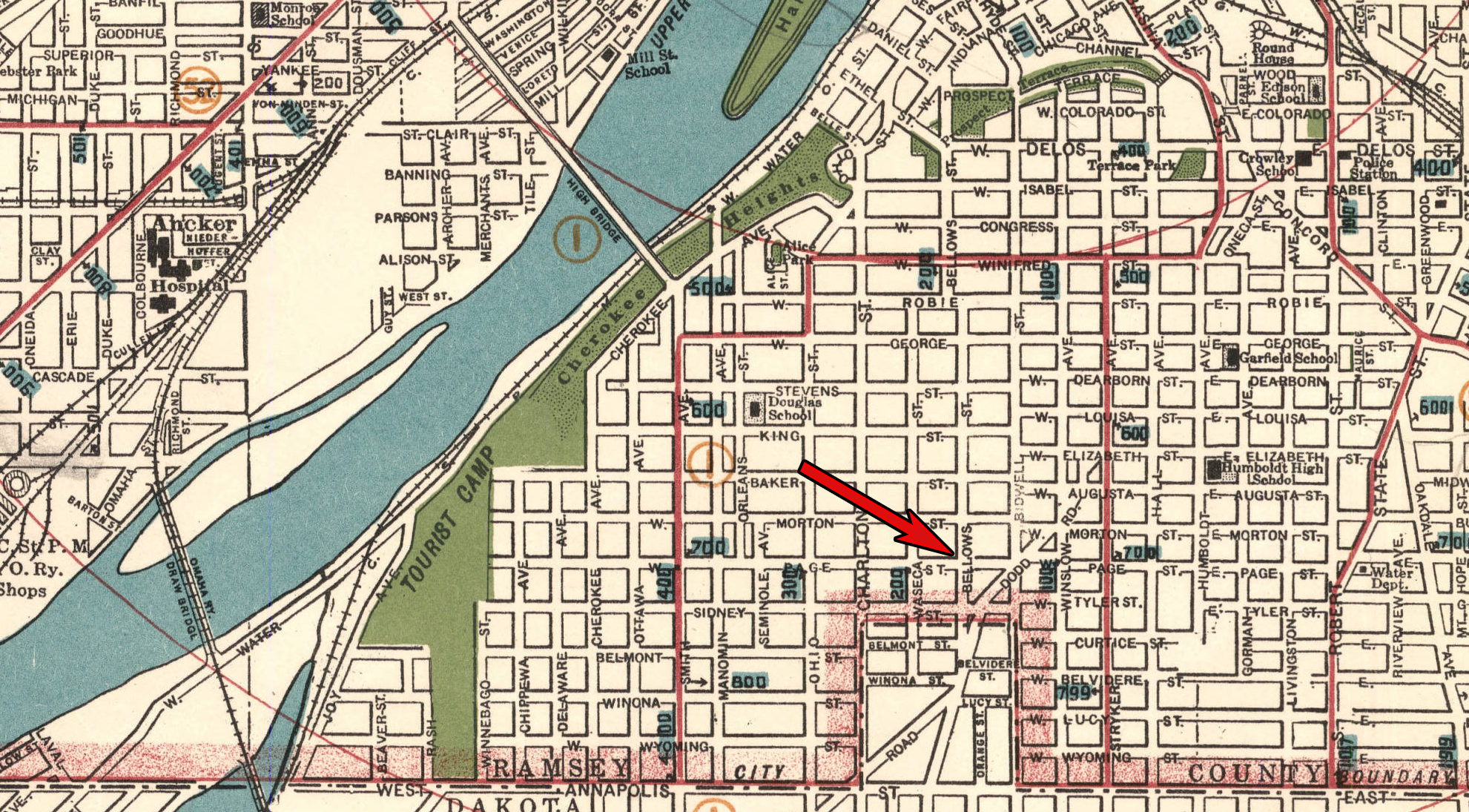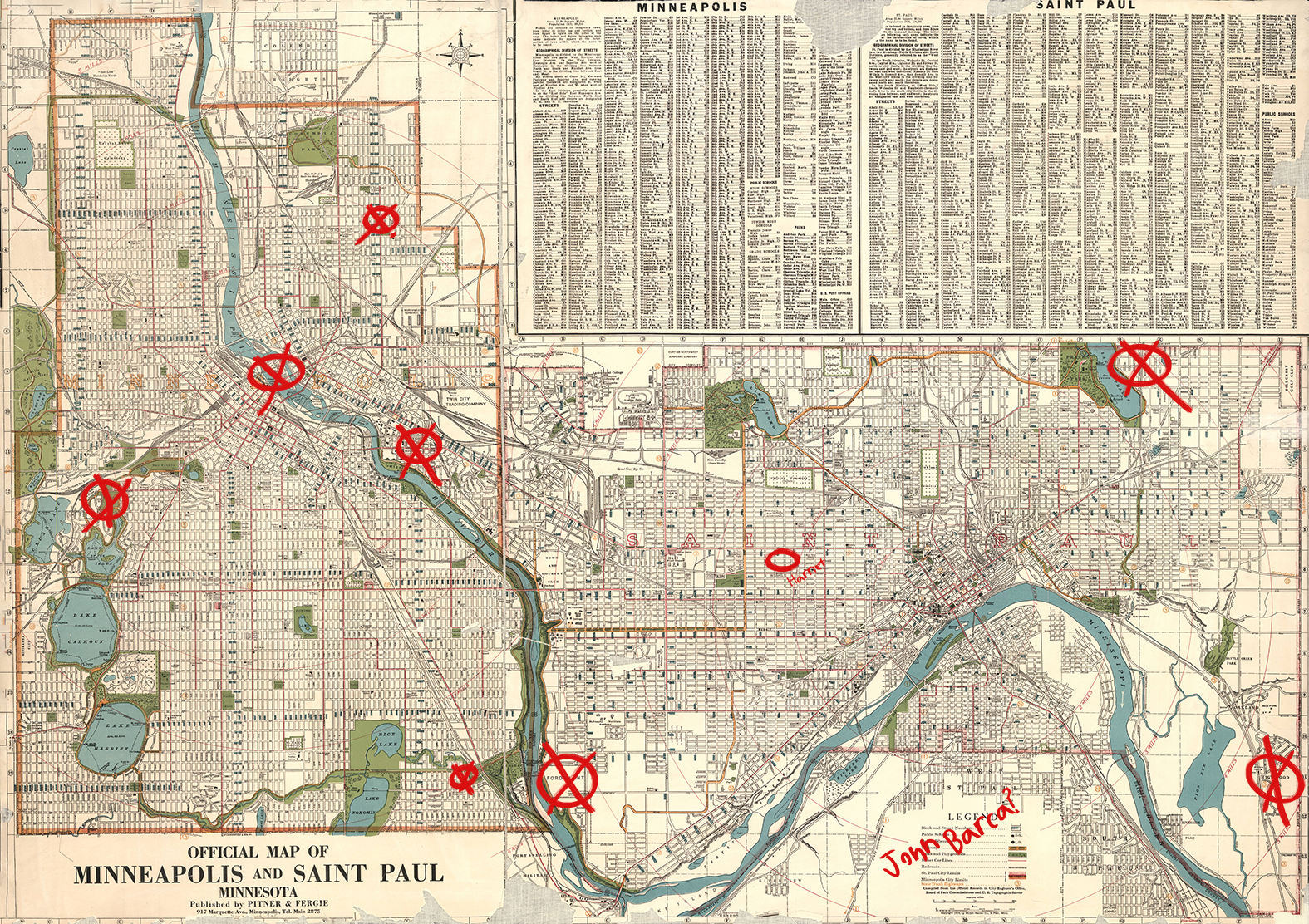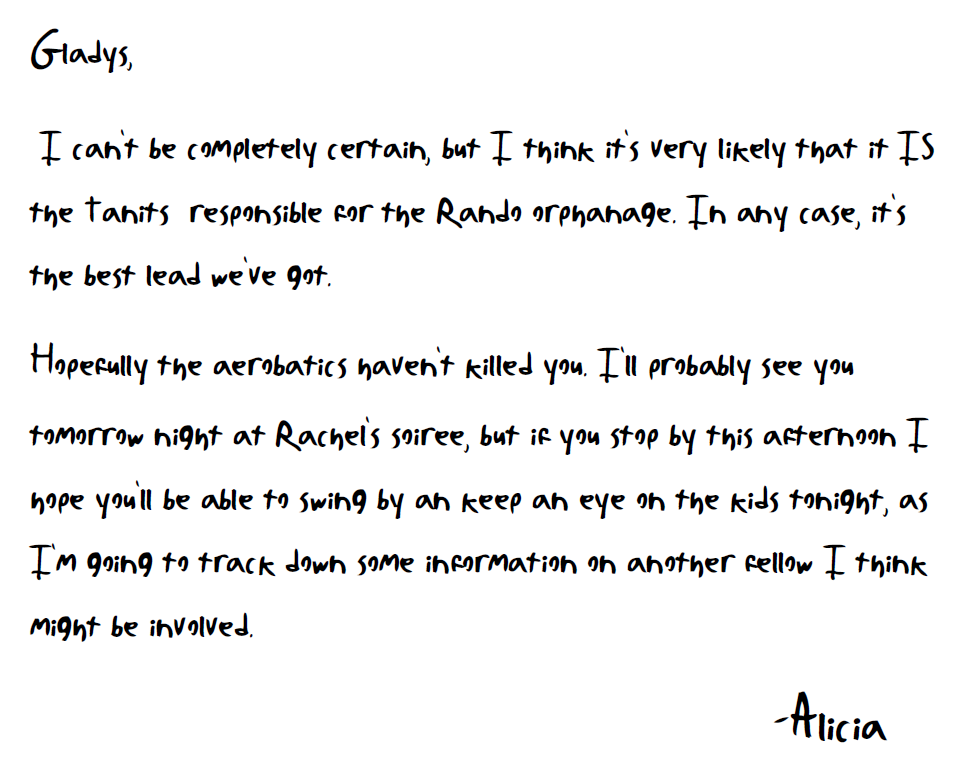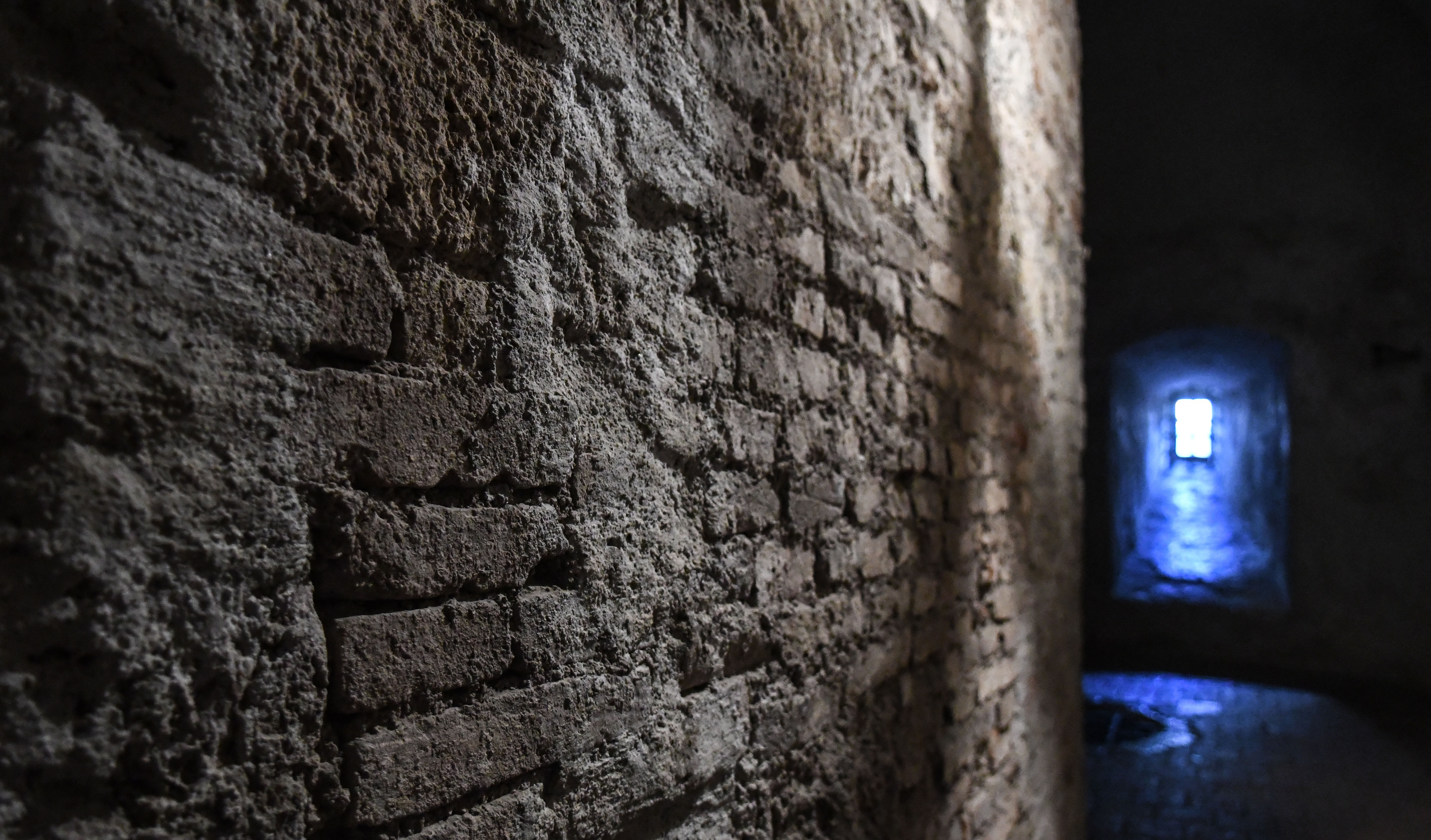
ADVANCED TECHNIQUE: LOCAL THEMES
The traps in a particular complex (or in one section of a larger environment, like a megadungeon) should follow certain patterns/themes/principles: The kobolds cover their pit traps with woven grass mats. The archmage painted rooms in his sanctum containing magical traps purple so that his servants would know to avoid them. Traps throughout the Storm Lord’s stronghold can be bypassed using the current passphrase. The smell of gas warns of the risk of explosion.
In terms of the game world, this obviously makes sense: The kobolds use the materials they have available. The archmage and the Storm Lord have practical considerations. The threat of gas usually threatens an entire mine or cave complex.
In terms of game design, these patterns allow the players to learn from their experiences. As they learn the patterns, the players are gaining expertise which they can then use (either to activate their character’s expertise or to trump it). “Do I see any black rubies inset into the walls? No? Okay, we’re probably fine.”
When executed well, this technique can shape the entire experience of a dungeon, creating interest even in areas WITHOUT traps. For example, I had a dungeon filled with sideways-gravity pit traps (that looked just like side corridors until you walked in front of them and then— Ahhh!). Once the PCs knew they existed, they had to (a) figure out how to get people out of them, (b) figure out how to get across them safely, and (c) spent the rest of the dungeon paranoid about every side corridor they came to. This particular group figured out that they could tie a weight to a rope and throw it into an intersection to see what would happen. Later, when they were running from a monster, they saw an unexplored side corridor up ahead and suddenly had a unique dilemma to grapple with.
Once you set these patterns, you can also play with them through variations and red herrings: We know that rooms with black rubies set into the walls are dangerous, but now there’s a room with red rubies. Is it safe? Will the red rubies have some different effect?
ADVANCED TECHNIQUE: FORTUNE-IN-THE-MIDDLE
We’ve spent a lot of time talking about how traps can be detected and disabled, but what happens when they actually get triggered?
Design traps that are more interesting than “single mechanical interaction = damage or no damage.”
Framing trap interactions using fortune-in-the-middle techniques can be useful here:
- “You hear the click of a pressure plate under your boot, what do you do?”
- “Suddenly arrows start shooting out of the walls! What do you do?”
- “There’s a sharp hiss and green gas begins shooting out of nozzles in the ceiling. What do you do?”
Even if the ultimate outcome is still damage-or-no-damage (as with the arrow trap), giving the players a chance to actively react to the trap as it’s being triggered makes the trap more interesting and engaging.
I find this to be true even when 95% of the possible reactions are likely to end up being mechanically modeled the same way: Drop to the floor, dive for cover, raise your shield, try to grab the arrow out of the air… It probably all boils down to a Dodge action that gives me disadvantage when making the attack roll for the arrows, right? Despite this, the player is actively engaged with the game world and a vivid picture is being collaboratively painted.
Random Tip: In situations like this, have the player roll the disadvantage d20 they’ve created. I’m indifferent to doing this in actual combat and it’s statistically irrelevant, of course, but it’s another way of getting the player engaged in the trap’s resolution.
This technique can often be particularly effective if the player has incomplete information on what they’re reacting to: They hear a click or a hiss; or there’s a sudden change in air pressure; or the sound of clockworks ticking down behind the wall. Do they freeze? Do they turtle? Do they run? Which way?
You might notice that any trap is resolved using a fortune-in-the-middle technique when it’s found before triggering: You’ve found a pressure plate in the floor… how do you disable it or bypass it?
Fortune-in-the-middle is also one of the reasons why the classic pit trap remains so popular: If you trigger the trap and fall into the pit, you are immediately faced with the question of how you’re going to get out of the pit. (And this can range from a relatively simple solution to a fiendishly difficult one depending on the nature of the pit.)
ADVANCED TECHNIQUE: DYNAMIC TRAPS
Any trap that presents the PCs with a new situation or dilemma is gold, and you can extend that response/problem-solving interaction beyond a single resolution point with dynamic traps.
Pay particular attention to traps that create or change the environment. Classic examples include flooding rooms (which you can extend to flooding an entire dungeon), confusion gas that turns friend against friend, or a trap that releases monsters that the PCs now have to fight. The trap is merely the instigation for a larger and more involved interaction.
Another example are the old school traps that teleport the entire group (or a single PC) to a different location: Not only do they create the immediate, ongoing, short-term complication of needing to figure out where you are (and how to get out!), but in the long-term such a trap can actually turn into a resource (with the PCs using it to quickly move around the dungeon).
Also: Traps that result in one of the PCs getting stuck immediately compel the group to figure out how to solve the problem. Consider a trap that causes anyone walking within a 10-foot square to fall into a magical coma. Somebody walks in and falls unconscious. Somebody goes to help them: BAM! Also unconscious. Can the rest of the group figure out how to get them out of there without succumbing themselves?
(You’re thinking of solutions right now, aren’t you?)
A variant of this is the trap wall that slides down and seals off a room or corridor. This one is interesting because its effect can vary greatly depending on how the PCs trigger it (and combines well with trigger uncertainty): If the scout triggers it, they’re now trapped on the far side. Or it might split the group in half. Or the whole group might get through and the net effect is that they can no longer backtrack (unless they reverse the trap or tear down the wall).
On that note, clearly triggering something and then not knowing what the trigger did is a great away to get the players engaged in paranoid speculation and anxiety. Maybe it’s just a broken trap. Maybe it caused walls to shift positions throughout the dungeon. Maybe it was an alarm summoning monsters from afar.
On the other hand, a non-obvious trigger with a non-local effect can create satisfying puzzles for the PCs. It may take them a long time to figure out that the walls are shifting every time they walk across the cartouche of the Grey Emperor.
So, to briefly sum up, think about traps that:
- Create new situations/dilemmas.
- Change the environment or create a new environment.
- Can also be a resource for the PCs once they figure it out.
- Endanger or imprison the victim of the trap.
- Have varied effect depending on position/circumstance.
- Have non-local (possibly wide-ranging) effects when triggered.
ADVANCED TECHNIQUE: ONGOING EFFECTS
GMs often fall into thinking of traps as bang-bang interactions. (Pun intended.) You hit the tripwire, an arrow fires from the wall, and the trap is done.
But it’s also possible for a trap to pose an ongoing threat or hazard. For example, if a non-drow enters the sacred hall, the statues of Lloth in the entryway activate and begin filling the entrance with webs while an alarm sounds. Or the turret of spinning blades that rises up into the room, once activated, continues spinning for an hour.
Obviously such traps are often dynamic ones, with the ongoing effect creating the new situation or dilemma for the PCs to solve.
This can also include traps that reset. Traps that instantly reset (and can trigger every time someone walks over the pressure plate, for example) are fun, but traps that take 2-3 rounds to reset (so that you might think it was a one-shot trap only for it to reactivate and zap you again) can be devilish puzzles for the players to figure out.
Longer reset intervals are also possible, but are generally only meaningful in xandered dungeons where the PCs are likely to come back to the trap later. Longer intervals might also mean a trap that needs to be manually reset (i.e., the monsters have to come by and do it), and this can even include traps that have been disabled by the PCs (i.e., the monsters find their sabotage and repair it).
ADVANCED TECHNIQUE: TRAPS AS COMPLICATION
Traps don’t have to be isolated encounters. They can be incorporated into larger, more diverse encounters to add interest and complexity. For example, fighting an ogre chieftain in a big room is fine. Fighting an ogre chieftain in a big room filled with pit traps (that the chieftain knows the location of, but the PCs don’t!) is a very different and very memorable encounter!
This can be particularly true with dynamic traps and traps with ongoing effects. A trap that can be triggered halfway through an encounter and completely changes the character or tactical situation of that encounter is a great way to spice up a battle. Such trap-like effects can also be deliberately triggered by the bad guys (they don’t have to wait for the PCs to trigger them accidentally!).
Running the dungeon as a theater of operations is great for this technique because any trap can dynamically become part of the tactical situation. Plus, once the players have learned to think of the dungeon like this, they’ll start using the traps they find to their advantage! “Let’s lure them back to the hall of alchemist’s fire and then pull the pin Diego used to jam the triggering mechanism!”
We’ve been talking about traps being integrated into combat encounters, but that’s not the only option. For example, traps can be combined with other traps to create cool, combinatory effects. A simple example I’m particularly fond of are pressure plates on the opposite sides of pit traps: You jump over the pit trap or climb out of it or disable it and walk across it… and then immediately trigger a trap on the far side.
(A Bigby’s hand that shoves them back into the trap they just avoided is always hilarious if used sparingly.)
Keep in mind that such interactions can be themes in a particular dungeon: The players can learn to be cautious of the far side of pits in Leopold’s Lair.
And what about other types of encounters? Could a nobleman lure victims into a charm person effect when negotiating? What about trying to solve a puzzle while an ongoing trap spits fire at you?
ADVANCED TECHNIQUE: NATURALLY OCCURRING “TRAPS”
We have a tendency to think of traps as designed mechanisms: Someone intentionally made the trap as a security measure.
But trap-like interactions can also be naturally occurring. Quicksand is the pulp classic, along with giant entangling lianas, spouts of lava, and icy crevasses covered by thin layers of snow.
If you’re having difficulty getting into this mindset, think about how the effect of a designed trap could naturally occur:
- A pit trap might be floor or rock ledge that has become unstable.
- A sleep spell that targets everyone in a room might be a cavern filled with soporific fungus.
- A fireball trap can be a cavern filled with explosive gas
A related technique are dungeon features that were designed for a practical purpose, but which can be traps for the unwitting or unwary. (“What does this lever in the old dwarven forge do? Ahhhhhh! Molten lava!”) You can also have features that have been broken down and become hazards due to neglect and the passage of time.
ADVANCED TECHNIQUE: BROKEN & SPENT TRAPS
Traps themselves can break down over time. The PCs can find their shattered and spent remnants as they explore the dungeon.
If you’re running an open table, this sort of thing is happening organically all the time, with groups coming across the wreckage left by previous expeditions. In any case, these scenes often paint a story of what came before: The skeleton at the bottom of the open pit. The flame spout hacked apart by a magical blade. The arrow hole with a piton spiked through it.
As such, these are cool dungeon details. But more than that, they are an opportunity for the PCs to learn about the types of traps that might be found in the dungeon. They’re an opportunity to gain expertise.
In many cases, traps don’t actually need to be broken in order to contain (or be surrounded with) evidence of the carnage they’ve wrought in the past. (Or, conversely, the absence of any signs of activity in an otherwise busy complex can itself be a clue.)

